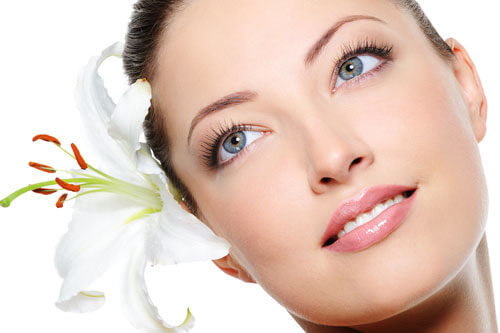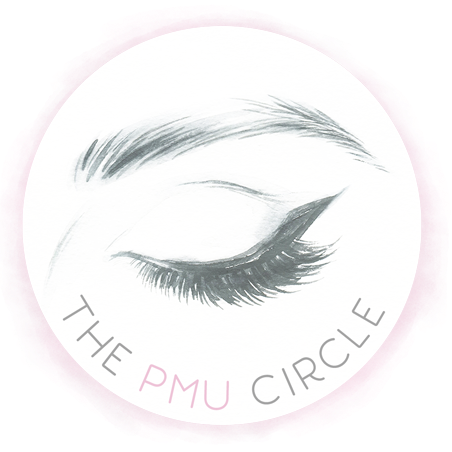
Be naturally beautiful
Imagine having…
…eyeliner that never runs and makes your eyelashes look permanently fuller for years.
…naturally defined eyebrows that do not smudge whilst swimming, working out in the gym or in the sun on holiday or honeymoon.
…a subtle blush of natural lip colour and a beautiful lip contour without the need for constant re-application of lipstick.
Permanent Cosmetic Makeup is a non-surgical procedure known as Micropigmentation. It is a very gentle and advanced procedure similar to tattooing but we use pigments that fade over time rather than permanent tattooing inks and we do not go into the skin as deeply as a traditional tattooist would do.
You may also hear Permanent Cosmetic Makeup called Cosmetic tattooing, Permanent cosmetics, Semi-permanent makeup or Medical tattooing.
Tiny amounts of hypo-allergenic pigment are skilfully and artistically deposited into the dermal layer of the skin to simulate the effect of a subtle and natural enhancement or a more defined make-up look.
The pigments are classed as permanent but are designed to fade in intensity over time, from approximately 12 months to 3 years, which is why the treatment is often referred to as Semi-permanent makeup.
However, even though the pigment ‘colour’ fades over time, the pigment ‘particles’ can stay in the skin for many years thereafter, which is why it is also referred to as Permanent makeup.
How is the micropigmentation carried out?
A pen with a tiny hair-fine needle is used which moves up and down, much like a sewing machine. Tiny dots of coloured pigment are deposited into the skin, gradually building up a natural and realistic effect with artistic use of colour, shadows and highlights.
A topical anaesthetic will be used (in the form of a cream, which is applied at least 30 minutes before the procedure is carried out) to numb the area.
Choosing a look to suit you
The pigment colours are blended to suit your skin tone, creating highlights and shadows to enhance your natural features and the look you wish to achieve.
We work very closely with you both in the consultation and during the treatment appointment, to help you decide on the most flattering and natural look.
As the treatments are designed to enhance your natural features and beauty, permanent makeup can be worn alone or with conventional makeup for a more dramatic or evening look.
We are confident that when you receive one of our Permanent Cosmetic Enhancements you will feel confident and beautiful with or without makeup. Your natural features are beautifully enhanced and any asymmetries can be corrected so you wake up looking great.
Who would benefit from a Permanent Cosmetic Makeup treatment?
- Women and men whose eyebrows or lips are naturally light or losing colour with age
- Those with over plucked, thin or barely-there eyebrows
- Chemotherapy patients before or after treatment who have lost their eyebrows
- Contact lens wearers unable to wear eyeliner
- Anyone who has asymmetrical brows, lips or nipples
- People with no time to apply daily make-up or would like the freedom from applying daily makeup. People with allergies to conventional make-up, watery eyes or who suffer from hayfever
- People with excessively oily skin whose make-up usually comes off
- Those with thin, pale or poorly defined lips
- Swimmers, sports people, entertainers and models
- Those who find it difficult to apply conventional make-up
Will the treatment hurt?
This is the one question that most people ask and are concerned about if they have never had a tattoo before.
We use the most effective topical numbing creams available and one of the first things clients say to me is how little they felt during the procedure. Many clients say they find tweezing is more uncomfortable than this procedure.
We all perceive pain differently, but when our clients are asked during their treatment, what their discomfort level is on a scale of 0-10 (0 being they feel nothing and 10 being they feel lots of pain) most clients generally say 0-4 after the first application of anaesthetic and the 0-1 after the second application of anaesthetic. Many clients tell us it’s the most relaxing time they have during their week.
What factors may affect the results?
There are many variables that can impact on the final results of micropigmentation which is partially determined by variations in skin type, and can also be affected by:
- Natural skin tones
- Individual healing ability
- Medication
- Skin characteristics (dryness, oiliness, sun damage, thickness, colour)
- PH balance of the skin (acidity)
- Alcohol intake
- Smoking
- Illness
What are the benefits and risks?
Micropigmentation is long lasting, smudge-free, 100% waterproof and beautifully natural, giving you an age defying face lift effect.
If you follow our sensitivity test and aftercare instructions fully, there is a very low risk of any side effects.
However, Micropigmentation is an invasive procedure as we are using needles to penetrate the skin surface and the treatment is not without risk. The main risks include:
- Slight skin irritation
- Uneven pigment colour
- Not achieving an exact colour match
- Fading of colour over time
- Scarring
- Pigment migration or spreading
Patients with keloiding problems or who have developed a raised scar after surgery or a tattoo previously, may not be good candidates for this procedure and you can discuss your prior scarring with Jo at your consultation. Patients with active infections should wait until the infection has cleared before seeking treatment.
If you are choosing to undergo a Medical Tattooing procedure such as areola tattooing after a breast surgery, you will need to check with your surgeon before having the procedure performed. Scar tissue accepts implanted pigment very differently than normal tissue and can result in uneven colouring, discomfort and keloiding (raised scarring).
It is usually best to wait until the scar tissue is mature and that can be anywhere from 7 to 12 months.

